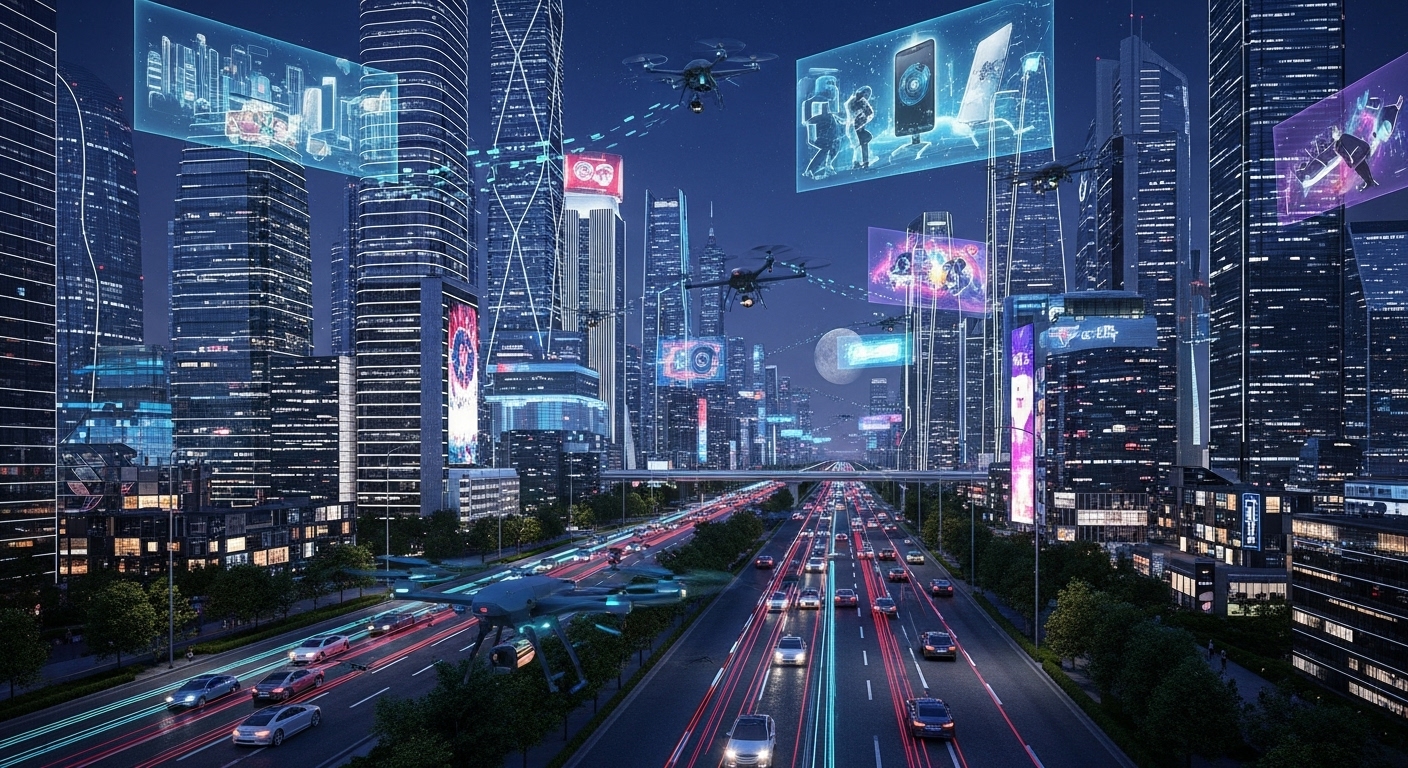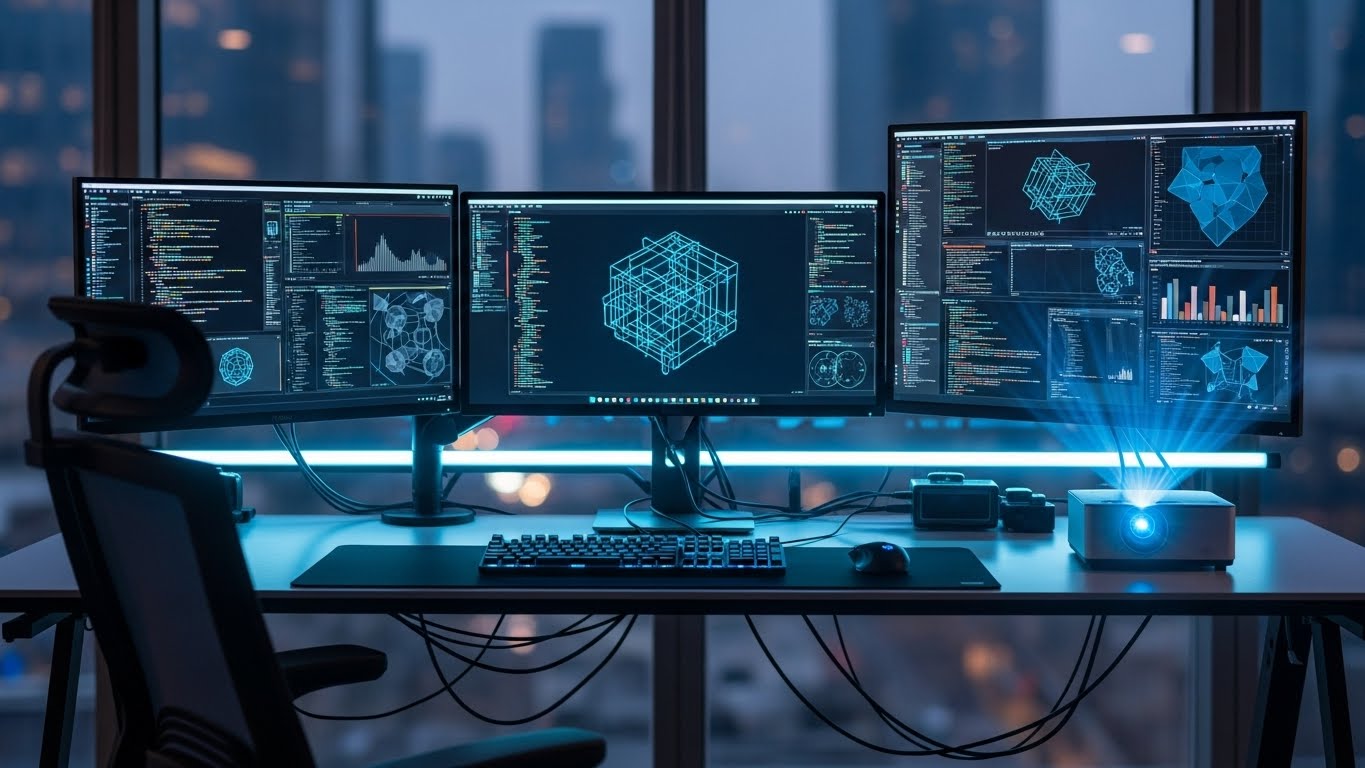Introduction to Modern Technology
Technology has become the backbone of human progress, reshaping the way we live, work, communicate, and solve problems. Over the last few decades, advancements in computing, artificial intelligence, the internet, robotics, and digital systems have brought us to a point where life is virtually unimaginable without technology. From smartphones to self-driving cars, from smart homes to digital healthcare, technology is embedded into every aspect of society. This blog explores the depth of modern technology, its growth, its benefits, its challenges, and its future possibilities in a comprehensive and detailed manner.
The Evolution of Technology Over Time
The journey of technology did not start in the twenty-first century. It began with early human tools like stones and fire, progressed to agricultural equipment, the invention of the wheel, the printing press, and then the industrial revolution. With the invention of electricity, telephones, steam engines, and later computers, humanity saw exponential growth in innovation. The twentieth century introduced computing, and the twenty-first century became the age of digitalization and artificial intelligence. Technology is not static; it is constantly evolving and adapting to the needs and dreams of societies. Today’s high-speed processors, intelligent algorithms, and advanced communication systems are built on centuries of learning and experimentation.
Digital Revolution and the Internet Age
One of the most defining moments in the history of technology was the emergence of the internet. What started as a military communication network has grown into a global platform connecting billions of people. In the early days of slow dial-up connections, sending emails and accessing simple websites was considered cutting-edge. Today, high-speed fiber optics, wireless connectivity, and satellite internet have transformed the internet into a dynamic and interactive space. People can work remotely, attend online classes, manage businesses, and entertain themselves on the internet. Social media platforms enable instant communication, video sharing, digital marketing, and virtual communities. The internet has revolutionized industries such as education, entertainment, retail, and finance, making digital connectivity an essential part of modern life.
Artificial Intelligence and Machine Learning
Artificial intelligence, commonly known as AI, is one of the most influential technologies of the modern era. AI enables machines to mimic human intelligence, learn from data, and make decisions. Machine learning, a subset of AI, allows systems to improve their accuracy over time without being explicitly programmed. Today, AI is used in voice assistants, chatbots, face recognition systems, healthcare diagnostics, financial forecasts, and self-driving cars. It analyzes large amounts of data within seconds, providing insights that humans may take years to discover.
AI is not limited to automation; it also enhances creativity and problem-solving. In fields like medicine, AI can assist in identifying diseases at early stages by examining medical images. In the business world, AI optimizes supply chains, detects fraud, and improves customer service. AI can also be personalized to understand user behavior, recommend products, and streamline content. However, as powerful as AI is, it also raises ethical questions about job replacement, data privacy, and decision accountability.
The Rise of Smartphones and Mobile Technology
In the past, computers were large machines used only by scientists and government agencies. Today, a simple smartphone has more computing power than the first space missions. Smartphones have revolutionized communication and connectivity. They combine the features of a computer, camera, GPS, entertainment system, and payment device into a single gadget. Mobile technology enables instant access to information, online banking, social media, gaming, and digital shopping.
Mobile applications or apps have become a fundamental part of human lives. There are apps for education, fitness, meditation, photo editing, transportation, and even controlling smart home devices. Mobile technology has reduced the gap between urban and rural regions by enabling access to education, services, and business platforms for people in remote areas. With advancements such as 5G connectivity, mobile technology is expected to become even faster, allowing seamless video streaming, cloud gaming, virtual reality experiences, and improved communication.
Cloud Computing and Data Storage
Cloud computing refers to the delivery of computing services, including servers, databases, networking, software, and storage, over the internet. Instead of storing data and programs on personal devices, users can access them from cloud platforms. This technology provides flexibility, scalability, and cost-effectiveness. Businesses no longer need to build expensive data centers. They can store and manage data in the cloud, ensuring that their information is safe and accessible from anywhere.
Cloud technology also enables collaboration. Teams working in different parts of the world can access the same documents, work on projects in real-time, and share resources without being physically present. Cloud computing also supports data backup and disaster recovery, ensuring important files are not lost. From individuals storing photos and videos to organizations managing customer data, cloud computing plays a significant role in today’s digital infrastructure.
Cybersecurity and Digital Safety
As technology grows, so do cyber threats. Cybersecurity refers to the practice of protecting computers, networks, and data from digital attacks. Hackers and cybercriminals use malware, phishing, ransomware, and other harmful techniques to steal personal information or disrupt systems. Cyber threats can affect individuals, businesses, governments, and critical infrastructures.
To protect digital information, cybersecurity uses encryption, firewalls, antivirus software, strong passwords, and regular security updates. Organizations also train employees to identify suspicious emails and protect sensitive data. Governments create cybersecurity laws and emergency response teams to combat cyber-attacks. With the rise of online banking, e-commerce, and cloud computing, cybersecurity has become more crucial than ever. Digital safety is not just a technical issue; it is also a social responsibility that requires awareness and collective action.
Blockchain and Digital Currencies
Blockchain is a digital ledger system that securely records transactions across multiple computers. It is decentralized, meaning no single authority controls it. Each transaction is stored in a block, and once a block is completed, it is linked to the previous block, forming a chain. Blockchain is widely known for powering digital currencies, also called cryptocurrencies.
Cryptocurrencies are digital forms of currency that exist only electronically. They allow peer-to-peer transactions without needing banks or intermediaries. Blockchain provides transparency and security by making transaction records tamper-proof. Beyond digital currencies, blockchain is used in supply chain management, digital identity verification, healthcare, and voting systems. It provides trust and accountability in digital transactions. However, cryptocurrencies are often criticized for their volatile prices and environmental impact due to high energy consumption in mining processes.
The Role of Technology in Education
Technology has revolutionized education by making learning more accessible, interactive, and personalized. Traditional classrooms have evolved into digital learning environments where students use computers, tablets, and projectors. Online education platforms allow students to take courses from anywhere in the world. This is especially valuable for working professionals, remote learners, and people with disabilities.
Interactive simulations, virtual labs, educational games, and digital libraries enhance student engagement. Teachers use technology to create visual presentations, track student performance, and communicate with parents. Artificial intelligence also plays a role in personalized learning by analyzing student behavior and offering customized academic support. Though technology has improved education, it also poses challenges like screen addiction, lack of personal interaction, and unequal access for students in underdeveloped regions.
Technology in Healthcare and Medicine
Healthcare is one of the biggest beneficiaries of modern technology. From digital health records to robotic surgeries, technology has transformed health systems. Telemedicine enables patients to consult doctors from their homes through video calls. This is especially useful for people living in rural areas or with mobility challenges. Wearable devices monitor heart rate, sleep patterns, physical activity, and oxygen levels, helping people maintain a healthy lifestyle.
Medical imaging technologies like X-rays, MRI scans, and ultrasound help doctors diagnose diseases accurately. Robotics assist surgeons in performing complex operations with high precision. AI-powered diagnostics analyze medical data to detect conditions like cancer, diabetes, and heart diseases early. 3D printing has revolutionized prosthetics, dental implants, and organ research. Technology has increased the efficiency of medical staff, reduced human errors, and improved patient care. However, digital health data must be protected to maintain patient privacy and security.
Smart Homes and the Internet of Things
The Internet of Things, commonly known as IoT, refers to a network of devices connected to the internet that can communicate with each other. These devices include everyday objects such as refrigerators, lights, security cameras, thermostats, and even curtains. When these devices are linked, they form smart homes, where household tasks become automated and manageable from mobile apps or voice assistants.
Smart homes provide comfort, energy efficiency, and security. For example, smart thermostats adjust room temperatures based on user preferences, saving electricity. Smart security systems send alerts to homeowners when suspicious activity is detected. Voice-controlled assistants can play music, set reminders, and control home appliances. IoT is not limited to homes; it is also used in agriculture, manufacturing, and city planning. Smart cities use IoT to manage traffic, waste, water supply, and public safety. While IoT offers convenience, it also raises concerns about privacy and data protection.



